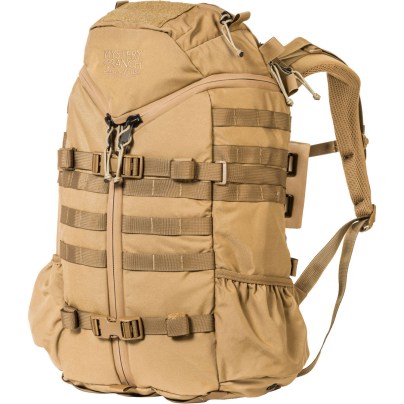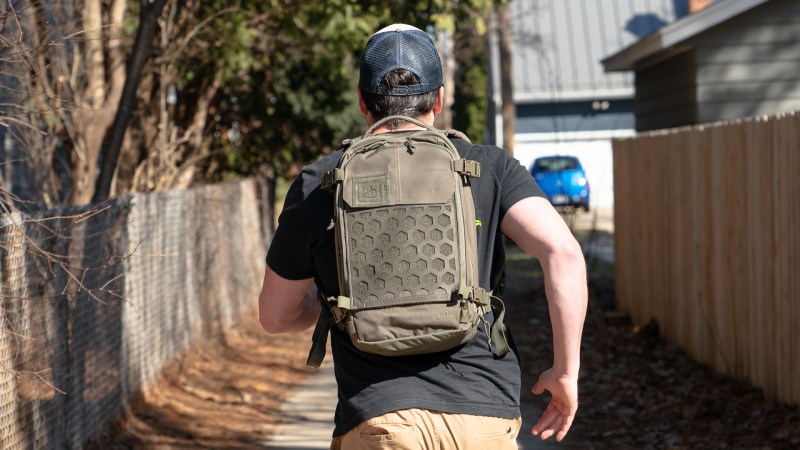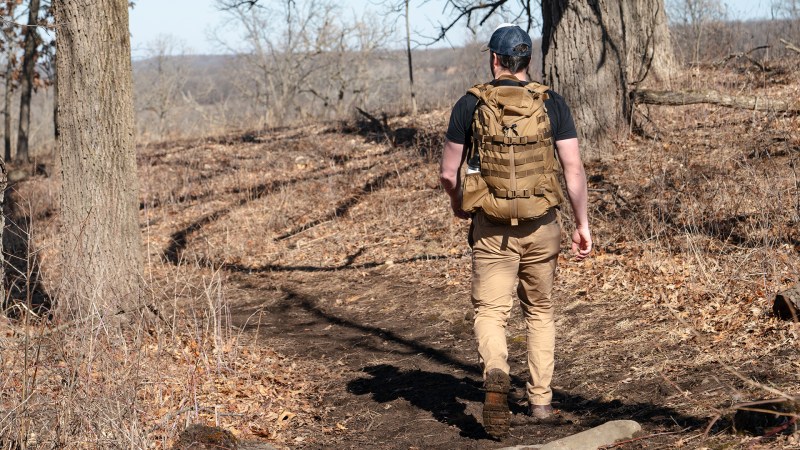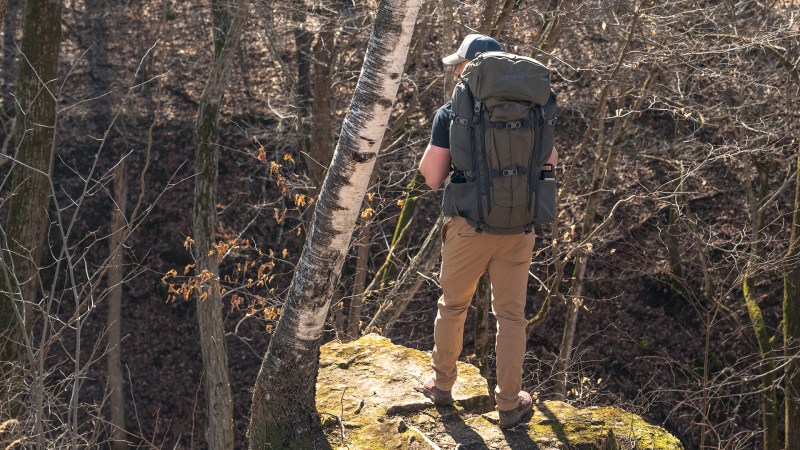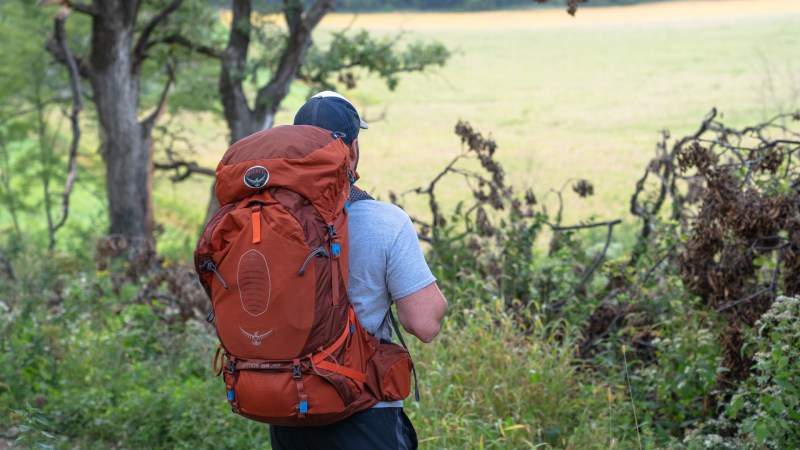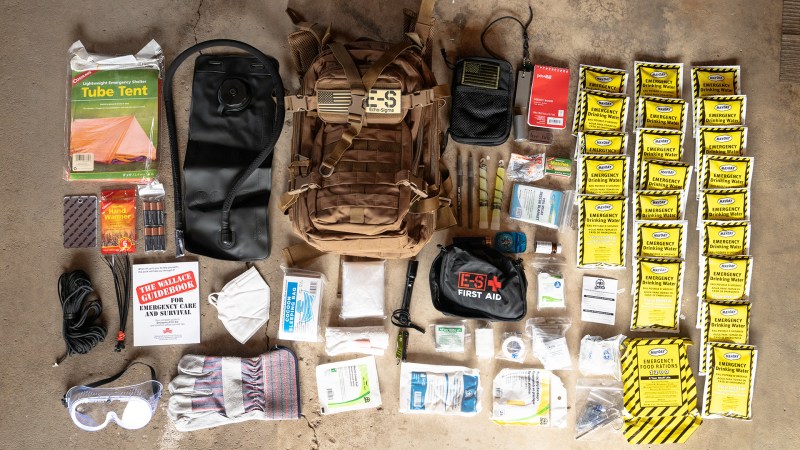We may earn revenue from the products available on this page and participate in affiliate programs.
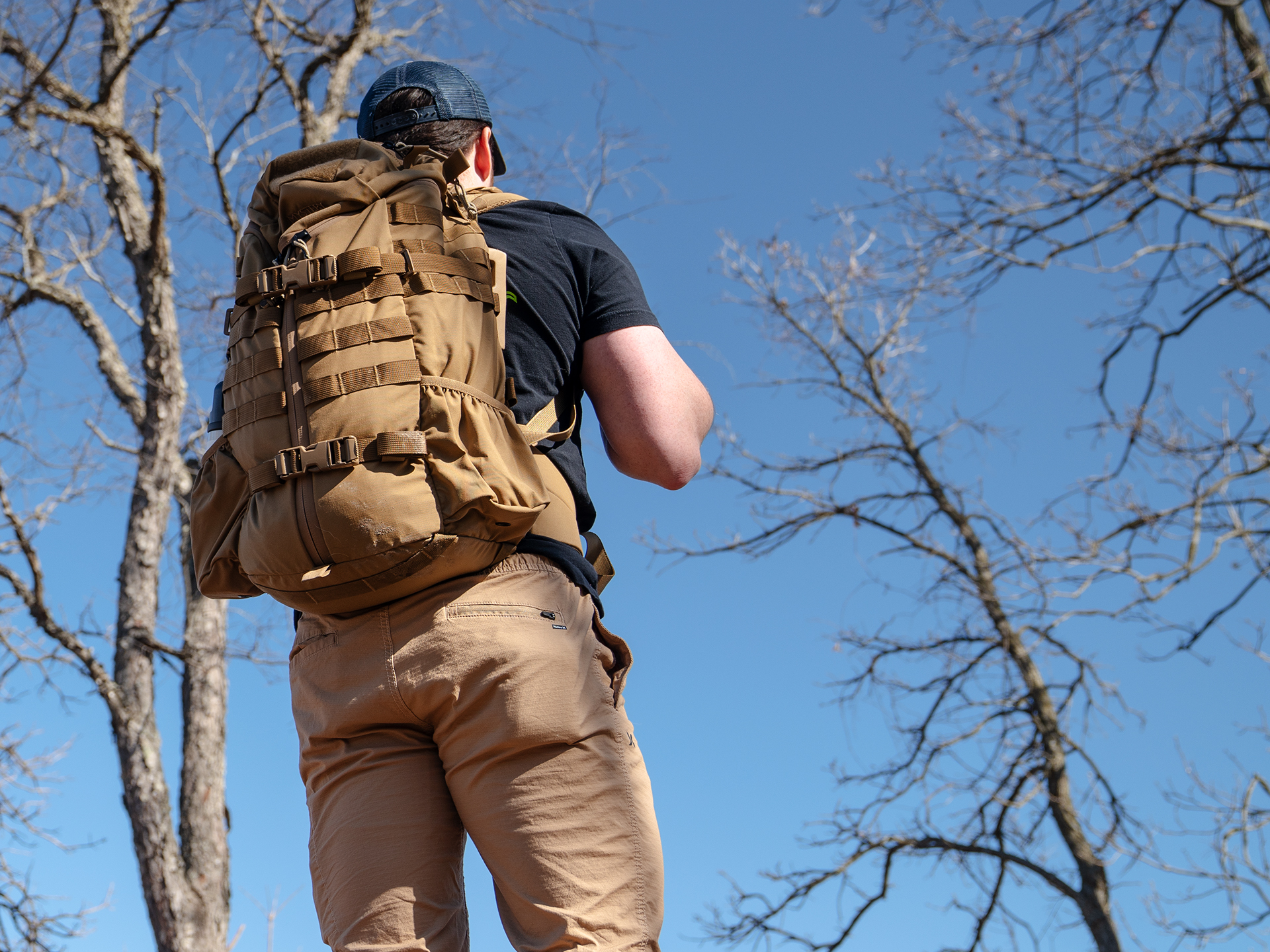
Go bags are finally getting some mainstream attention, and we couldn’t be happier about it. After all, having all of your essentials in one place, ready to go, is one of the most important steps toward emergency preparedness.
Don’t believe us? Just reference some of our favorite movie scenes. It seems like every spy eventually opens a safety deposit box to find passports, cash, and a pistol. My thoughts on The Patriot are well-documented, and the movie even features a 1776-style go bag. Remember when Mel Gibson’s character runs into his burning house to retrieve a box of gear? It sure was a good thing all that stuff was organized and ready to go.
You may not have to worry about global super-villains or marauding British cavalry, but there are plenty of other reasons to have a bag of essentials ready to go at a moment’s notice. By the time a natural disaster or civil unrest reaches your doorstep, it’s too late to start thinking about what you need to grab on the way out the back door. To that end, we selected some of the best go bags to get you home or survive on the go for various amounts of time.
- Best Get-Home: 5.11 Tactical AMP10
- Best Three-Day: Mystery Ranch 3 Day Assault BVS
- Best Long-Term: Kuiu Pro 6000
- Best Hiking: Osprey Atmos AG 65
- Best Duffel: The North Face Basecamp XL
- Best Ready-Made: Echo-Sigma Get Home Bag
Best Get-Home Bag
5.11 Tactical AMP10
Best Three-Day Go Bag
Mystery Ranch 3 Day Assault BVS
Best Long-Term Go Bag
Kuiu Pro 6000
Best Hiking Go Bag
Osprey Atmos AG 65
Best Duffel Go Bag
The North Face Basecamp XL
Best Ready-Made Go Bag
Echo-Sigma Get Home Bag
Why you should trust us
Like you, we’re deeply immersed in the world of tactical gear — gear that’s specifically designed to accomplish a certain mission. Some day, you may find that your mission doesn’t come from the chain of command, but from your own survival instinct and a pressing need to skip town in a hurry. We’ve taken the expertise that comes from reviewing things like first aid kits, water filters, and compasses and used it to sniff out the best go bags available. In this case, we went a step further by buying some of our own and testing them first-hand to see what works and what needs work. As always, only gear we personally trust made the final cut.
Types of go bags
If you ask 10 people to describe their ideal go bag, you’ll probably get 10 different answers. That doesn’t mean your friends prepared improperly, it means everyone has specific circumstances they need to account for. We chose to break this down by size. At the small end are bags designed to carry enough gear to get you from work back to your home on foot as quickly as possible. On the other end of the spectrum are massive bags meant to sustain you for months (or more), possibly with the help of a vehicle.
Get-home bags
You’re probably away from your house most of the time during the day. If disaster should strike, your first priority would probably be to get home, where you can regroup with family or friends, grab as many supplies as possible, and evacuate the area. Often, one of the first casualties of a natural or man-made disaster is freedom of movement. Roads become deadlocked, power may be cut, and public transportation will likely cease to exist. You need to be prepared to move on foot.
The U.S. Census Bureau reports that the average American commute time is 27.6 minutes. That’s in a car and presumably includes highway driving. Your 30-minute commute could easily turn into an all-day physical event in an emergency. Get-home bags are designed to be light and comfortable. You should be able to run at least a mile without difficulty. The bag you choose should also be small enough to be stored out of sight in your car so it’s always there when you need it without drawing unwanted attention. Choose a color that’s subdued and makes sense for your environment — camouflage isn’t a great option for urban environments, but shades of brown and green are pretty versatile.
Three-day bags
The general consensus for midsized go bags is that they should be able to sustain a person for three days. That covers food, water, a first aid kit, ammunition, clothing, and anything else you might need. These bags tend to be in the 30- to 50-liter size range and should have some way to add gear with MOLLE panels. While you probably wouldn’t want to run more than a few hundred yards wearing a three-day bag, you should still be able to cover ground at a good clip with short bursts of running and climbing when necessary.
So, what goes into your three-day bag? That’s up to you, but spend some time thinking through situations you’re likely to encounter and how you want to respond to them. Remember that the goal of a go bag is to get you away from trouble rather than to establish a campsite. This gear list is a good starting point, but you’ll want to think long and hard about what your specific priorities are, taking into consideration your location and the time of year. Packing for Arizona in the summer is very different from packing for Minnesota in the winter, after all. You’ll want to bring enough gear to sustain yourself for three days while still being able to hike all day — and all night, if you have to.
Long-term go bags
In a worst-case scenario, you may not be able to return home. Circumstances may force you to keep moving for weeks on end or cover great distances on foot. In that case, your pack will look more like something an Appalachian Trail through-hiker would use than what you’d see during a week-long field exercise. Simply put, your pack should be able to sustain you indefinitely.
That means that instead of food and water, you’ll need to bring equipment for acquiring food and water. Maybe a sleeping bag and small tent are worth some extra weight. Bushcraft tools, a more comprehensive medical kit, and a solar charging system might make your packing list. If you need help getting started, give this Garand Thumb video a look.
Because you’re preparing for a survival situation rather than a military mission, you may have the option to bring a vehicle — especially if you bug out early enough relative to everyone else. In that case, consider using a duffel or locking hard trunk that can carry all the niceties that can sustain you long-term but aren’t worthy of space in your three-day bag. If you’re lucky enough to bug out with wheels, you’re lucky enough to bring all three kinds of go bags.
Key features of go bags
Capacity
Matching capacity to your mission is key, and more is not better. Having a tent, sleeping bag, and a camp stove is great if you’re driving away from danger, but that kind of stuff would be a liability during a dead sprint to get home when every second counts. As a rule of thumb, get-home bags should be 20 liters or less, three-day bags should be 30 to 50 liters, and the sky’s the limit for long-term bags.
The heavier your pack is, the more support you’ll need. Look for padded straps regardless of size. Hip belts aren’t a big deal on little get-home bags, but they’re important on three-day and long-term go bags. Long-term bags should have ample padding on the shoulder straps, hip belt, and back area. We chose several options that offer extensive customization opportunities to create an excellent ergonomic fit. Some can be ordered with different sized frames, so enlist a buddy to measure yourself accurately. Manufacturers like Kuiu, Mystery Ranch, and Osprey offer detailed videos that show exactly how to achieve a proper fit.
Organization
There’s a reason there aren’t any seabags on this list. Aside from the vehicle-specific duffel we chose, every go bag here allows you to organize your gear as you pack it. The camping technique of packing heavier gear toward the bottom and close to your body holds true. Separating gear by its purpose is also a good idea; keep rations, medical supplies, and tactical gear together in easy-to-reach compartments to minimize the amount of time you spend rummaging around.
It’s also a good idea to use separate containers inside your go bag. Air-tight plastic bags are great because they’re cheap, light, and clear so you can see what’s inside without opening it. MOLLE-compatible first aid kits are great because they can be removed and attached to another pack or plate carrier if need be. Use compression sacks to squeeze things like a sleeping bag or spare layers of clothing into less space. Once you’re done, it’s a good idea to unpack and repack your gear about once a month to stay familiar with it and keep an eye on consumable or seasonal items that might need to be replaced.
Expansion
There is no perfect go bag. What works in the summer won’t be adequate in the winter, and preparing for a natural disaster is very different from dealing with a hostile force. One trick you can use to stretch your gear’s utility is incorporating removable compartments. Go bags with MOLLE panels on the outside allow you to quickly swap out pouches to suit the mission at hand.
This approach can also save you money. Instead of having multiple first aid kits, you can have one that can be moved from your vehicle to your pack, to your plate carrier or chest rig as the situation evolves. The same goes for navigation and comms gear, magazine storage, and optics. Laser-cut MOLLE is lighter than traditional webbing, and products like 5.11 Tactical’s Gear Set system add even more flexibility.
Camouflage
If the world around you is bad enough to warrant a go bag, it’s bad enough to necessitate keeping a low profile. Most manufacturers offer some form of green, brown, and camouflage pattern. Whether you choose digicam, jungle, old-school tricolor, or something out of the hunting world should depend on your surroundings. What kind of vegetation is common in your area? Are there a lot of contrasting shades, or would a solid green or tan pack blend in best? When in doubt, ask your local hunters what they wear.
This is where the obligatory reminder comes into play: Camouflage is about blending in with your surroundings. There are places where the best MultiCam pack in the world will make you stand out like a neon light in the dark, and we call those urban areas. You may not want to advertise your tactical side, in which case a pack that makes you look like everyone else could be your best bet. That’s why we included the Osprey Atmos AG 65. One of our favorite waterproof backpacks could also be a viable option.
Pricing considerations
Budget
Dedicated go bags aren’t really aimed at the budget segment. The kinds of materials, features, and research and development that go into a good go bag aren’t cheap and prices reflect those investments. Still, there are options for those of you who want to spend as little as possible.
If you need to keep costs under $150 or so, a basic backpack can be a workable option. Your average bookbag and military-style backpacks can both work, depending on your environment and needs. Just look for something durable with a few compartments to keep everything organized. Subdued colors are generally preferable, although the usual army green and coyote tan can actually make you stand out in an urban environment.
Mid-range
We consider any go bag between about $150 and $300 mid-range. For that kind of money, you’ll be able to take your pick from a wide selection of quality bags from most manufacturers. Assault packs, hiking packs, and duffels can all fall into this category.
Some of our favorite mid-range go bags are the rugged assault packs from companies like 5.11 Tactical and Mystery Ranch. You can also get high-end camping packs from brands like Osprey, Gregory, and Deuter at similar prices. Materials and craftsmanship tend to be very good, and you’ll likely get peace of mind from an outstanding warranty. Features vary among styles, so you can choose something tactical or everyday practical. If we could only shop one category of go bags, this would be it.
Premium
Premium go bags commonly cost more than $300 and open up a new level of build quality and features. That isn’t to say mid-range go bags aren’t capable; these are built to carry much heavier loads across much further distances. Most are designed for hunters who need to pack gear, weapons, and meat across miles of rough terrain.
This is where you’ll find brands like Kuiu, Sitka, and Exo Mountain gear. Compared to traditional hiking packs, these are heavier but more robust. Capacities tend to be much larger. This kind of pack makes heavy loads much more manageable, but carrying one is still a physical event. Treat this kind of go bag like a last resort that can be thrown in a vehicle and taken with you when you run out of road. They’re a long-term survival option for indefinite survival situations.
How we chose our top picks
For this gear guide, we started by revisiting the whole idea behind go bags. How long will you be gone? What will you need to carry? How will you be traveling? What does your environment look like? Your answers will vary, so we chose a range of bags that satisfies a range of needs, including getting home from work, indefinite wilderness survival, and everything in between. We turned to the best brands in the business to find a great solution for everyone. Whether you want something that can tag along during a deployment, get you to the campsite every weekend, or ride shotgun in your car every day, there’s something here for you.
FAQs on go bags
You’ve got questions, Task & Purpose has answers.
Q. How much does a good go bag cost?
A: We found small, well-built backpacks for as little as $150. Larger packs that can sustain you indefinitely cost closer to $500 by the time you add the necessary frame and suspension system.
Q. Do I need a go bag?
A: In most cases, staying put is better than taking your chances on the road. Don’t be too quick to assume that the grass is greener somewhere else. There are times, though, when circumstances dictate that you evacuate. When that happens, a go bag is very necessary.
Q. What makes a good go bag?
A: A good go bag holds everything you need and lasts as long as you need it to. That’s situation-dependent, so buy what works for you –– not someone else. In general, durability and ease of customization are big advantages.
Q. How big should a go bag be?
A: Go bag sizing is directly related to time. If you just need to get home from across town, a small backpack is great. Assault packs are best for stints of three days or less. Beyond that, look for a hiking or hunting pack to travel on foot, or a large duffel to travel by vehicle.

